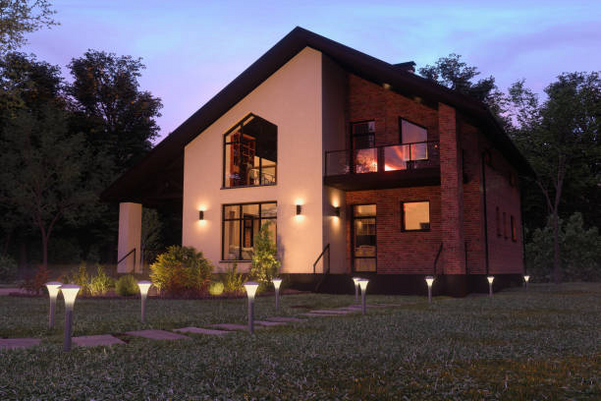
One key element in merging indoor and outdoor spaces is effective outdoor lighting. Good lighting helps create a seamless transition between your indoor and outdoor areas. Outdoor lighting not only sets a welcoming mood but also enhances the aesthetics of your home. It’s great for evening gatherings and adds a touch of elegance. You can use different types of lighting, such as string lights, lanterns, and pathway lights. Choose the ones that best suit your style and needs.
The Open Floor Plan Concept
The open floor plan is a popular trend in modern home décor. It removes barriers between the kitchen, dining, and living areas, creating a more spacious and cohesive environment. This concept also extends to outdoor spaces. Large glass doors and windows can connect your indoor spaces to your patio or garden, creating a feeling of openness and allowing natural light to flow in. It’s a great way to make your home feel larger and more inviting.
Choosing the Right Furniture
Selecting the right furniture is essential for merging indoor and outdoor spaces. Opt for furniture that can withstand external conditions. Materials like teak, wicker, and metal are great options. They are durable and stylish. Additionally, consider comfort and functionality. Outdoor sofas, chairs, and tables should be both cosy and practical. Modular furniture is also a good choice as it allows flexibility in arrangement. You can easily move and adjust it to suit different occasions.
Incorporating Greenery
Plants can play a vital role in blending indoor and outdoor spaces. They bring a touch of nature to your home. You can place potted plants around your living areas. Hanging plants, vertical gardens, and flower arrangements are also great options. Greenery adds a sense of tranquillity and freshness. Choosing plants that thrive in indoor and outdoor environments is important. This will ensure they remain healthy and beautiful throughout the year.
Utilising Multi-Functional Spaces
Creating multi-functional spaces is a smart way to merge indoor and outdoor areas. These spaces serve more than one purpose. For example, a balcony can be used as a dining area, a lounge, or a workspace. The same goes for patios and decks. By being creative, you can maximise the use of every inch of your home. This approach is beneficial for smaller homes and apartments. It provides flexibility and makes your living space more versatile.
Colour Schemes and Textures
The colour schemes and textures you choose can significantly impact the cohesion between your indoor and outdoor spaces. Neutral colours often work best as they create a seamless flow. Shades of white, beige, and grey can be complemented with bolder accents. Natural textures like wood, stone, and woven fabrics add warmth and character. The indoor and outdoor areas must share similar design elements. This helps to achieve a harmonious look and feel.
When it comes to modern home décor, one of the most transformative elements is the thoughtful use of colour schemes and textures. Seamlessly blending indoor and outdoor spaces allows you to create a cohesive and inviting atmosphere beyond traditional boundaries. Consider the following tips for achieving an optimal balance:
- Neutral Tones: Use neutral colours like beige, white, and soft greys to create a tranquil and unified look.
- Pop of Color: Introduce bold accents like deep blues, vibrant oranges, or lush greens to add visual interest and energy.
- Natural Textures: Incorporate natural materials like wood, stone, and rattan, which can seamlessly connect your indoor and outdoor areas.
- Layering: Mix and match textures such as soft fabrics, rough stones, and smooth metals to add depth and dimension to your space.
- Consistency: To maintain a harmonious flow, ensure that your chosen colour palette and textures are consistently applied indoors and outdoors.
Creating a Seamless Transition
Merging indoor and outdoor spaces aims to create a seamless transition. One effective way to do this is by using similar flooring materials. For example, you can extend your indoor tile or wood flooring to your patio. Another option is to use large rugs that connect different areas. Consistent decor elements such as cushions, throws, and artwork also help blend the spaces. This seamless transition enhances the flow and functionality of your home.
Conclusion
Modern home décor increasingly focuses on merging indoor and outdoor spaces. Adequate outdoor lighting sets the ambience and enhances aesthetics. Open floor plans, suitable furniture, and greenery further blend the boundaries. Multi-functional spaces, cohesive colour schemes, and seamless transitions play vital roles. These elements not only improve the look of your home but also enhance its functionality. By combining these strategies, you can create a harmonious and inviting living environment. Your home will become a true extension of your personality and lifestyle.




 POSTED BY
POSTED BY 

